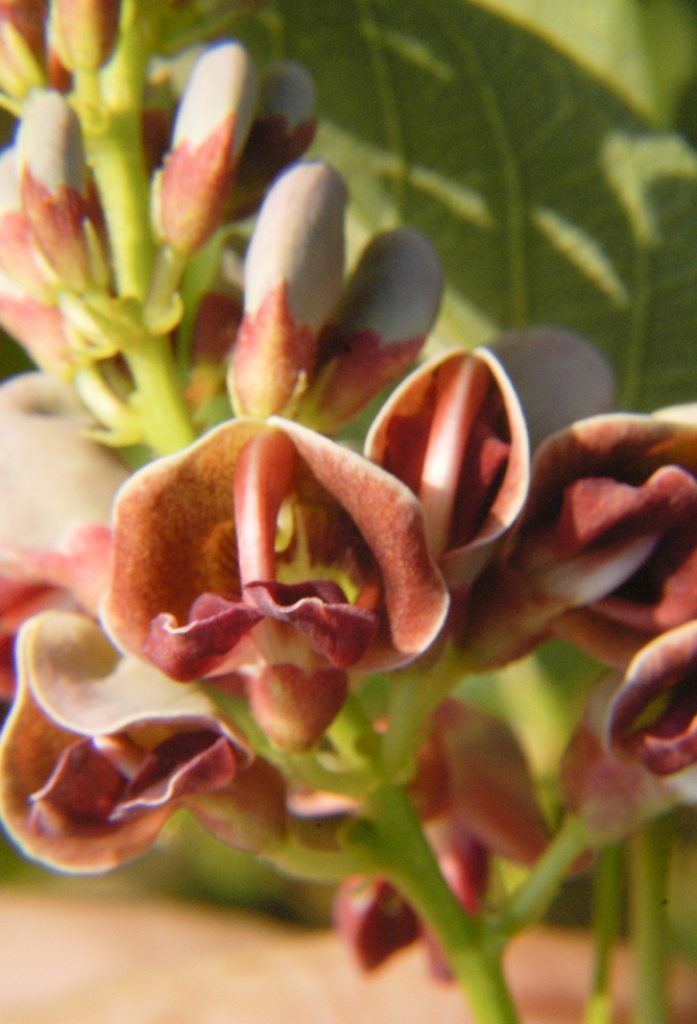American groundnut is a perennial vine that bears edible beans and large edible tubers. The tubers have a delicious flavour, somewhat like roasted sweet potatoes. It has a greater advantage over other root crops like potatoes, sweet potatoes, and true yams as it is a nitrogen fixer.
How to eat American groundnut
The tuber should be cooked. They have a delicious flavour, somewhat like roasted sweet potatoes and receive very high marks in taste trials. The tuber can also be dried and ground into a powder, then used as a thickening in soups, etc., or added to cereal flours when making bread. Tubers contain 17% crude protein, which is three times more than found in potatoes. The tubers can be harvested in their first year, but they take two to three years to become a sizeable crop. They can be harvested at any time of the year but are at their best in the autumn. Tubers harvested in the autumn will store at least until the following spring. Yields of 2.3 kilos of tubers per plant have been achieved. The seed should be cooked. Seeds are relatively small and not produced very freely; they are used like peas and beans and are a good source of protein. They can be ground into a powder and added to cereals when making bread. Young seed pods are edible. Groundnuts are commercially farmed in Japan.

The tubers were used in folk remedies for that cancerous condition known as “Proud Flesh” in New England. Nuts were boiled and made into a plaster, “For to eat out the proud flesh they (the native peoples) take a kind of earth nut boyled and stamped”.
There is one report that the plant contains a latex that could be used to produce rubber.
How to grow American groundnut
American groundnut prefers a light, rich soil and a sunny position. When grown in a warm, dry situation in well-drained sandy soil, the plants will be long-lived, with the tuberous roots increasing in size and number each year. Another report says that the plant tolerates light dappled shade. American groundnuts dislike windy situations but tolerate acid soils.
Groundnuts tolerate annual precipitation of 97 – 117cm (38 to 46in), an average yearly temperature of 9.9 to 20.3°C (50° – 68°F) and a pH of 4.5 to 7.0. They tolerate a range of climatic conditions and produce well in cool temperate zones and the subtropical conditions of South Florida. Whilst most reports suggest that this species should be cold hardy in all parts of Britain, one report says that the plants may require protection in severe winters.
The groundnut has occasionally been cultivated for its edible root and has the potential to become a commercial crop. Cultivars have been selected in the past for higher yields and larger tubers; it is said that the yields from some of these cultivars can rival potato crops. The best yields are obtained when the plant is left in the ground for at least two growing seasons. Yields of 30 tonnes per hectare have been achieved from weed crops growing in a field of cranberries. This species has been grown in the past in S. Europe and is a nitrogen-fixing edible ornamental for permaculturalists. The plant forms long, thin roots that enlarge at intervals along their length to form the tubers; the effect is somewhat like a necklace. Once established, plants can be invasive and have become a weed of cultivated cranberry crops in N. America. A climbing plant, it twines around the thin branches of other plants for support. The flowers have the scent of violets. This species has a symbiotic relationship with certain soil bacteria; these bacteria form nodules on the roots and fix atmospheric nitrogen. Some of this nitrogen is utilized by the growing plant but also be used by other plants growing nearby. There are reports that it has grown well in clay soils.
How to propagate American groundnut
Pre-soak seeds for 3 hours in tepid water and sow in late winter (in a cold frame in colder climates). The seed usually germinates in one to three months at 15°C (60°F). When large enough to handle, prick the seedlings out into individual pots and grow them in light shade in the greenhouse for their first winter, planting them out in late spring or early summer. Division can be carried out at almost any time, though spring is probably the best time. Dig up the roots, harvest the tubers and replant them where you want the plants to grow. It is also possible to harvest the tuber in winter, store them in a cool, reasonably dry but frost-free place over the winter and then plant them out in the spring. The tubers lose moisture rapidly once they have been harvested, so make sure to store them in a damp medium such as leaf mould.
More information in the plant database https://pfaf.org/user/plant.aspx?latinname=Apios+americana







